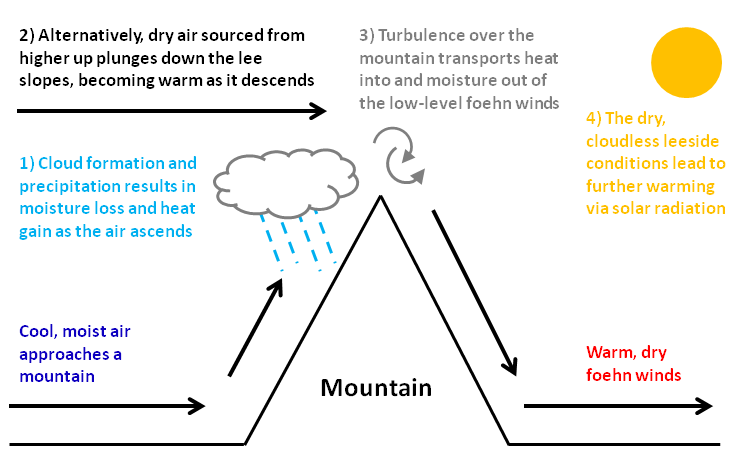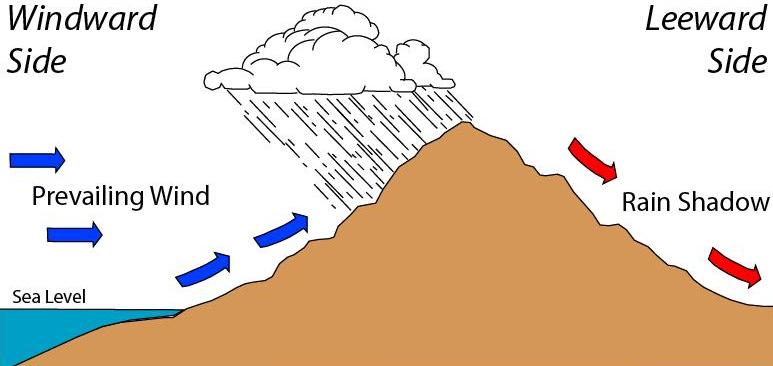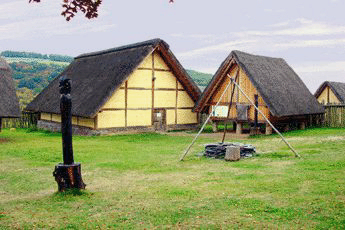|
Zeltingen
Zeltingen-Rachtig is an ''Ortsgemeinde'' – a municipality belonging to a ''Verbandsgemeinde'', a kind of collective municipality – in the Bernkastel-Wittlich district in Rhineland-Palatinate, Germany. Geography Location The municipality lies surrounded by vineyards in the great bend in the Moselle between Bernkastel-Kues and Traben-Trarbach not far from the university town of Trier. Both ''Ortsteile'' – Zeltingen and Rachtig – are found on the river's right bank where the valley broadens out into very flat country bordering on the Hunsrück. Zeltingen-Rachtig belongs to the ''Verbandsgemeinde'' of Bernkastel-Kues, whose seat is in the like-named town. Nearby municipalities Neighbouring municipalities are, among others, Erden, Ürzig and Graach an der Mosel. The nearest middle centres are Bernkastel-Kues, some 5 km away, and Wittlich, some 15 km away. Trier lies some 45 km away. Climate Zeltingen-Rachtig lies in a transitional zone between temper ... [...More Info...] [...Related Items...] OR: [Wikipedia] [Google] [Baidu] |
Moselle
The Moselle ( , ; ; ) is a river that rises in the Vosges mountains and flows through north-eastern France and Luxembourg to western Germany. It is a bank (geography), left bank tributary of the Rhine, which it joins at Koblenz. A small part of Belgium is in its drainage basin, basin as it includes the Sauer and the Our River, Our. Its lower course "twists and turns its way between Trier and Koblenz along one of Germany's most beautiful river valleys."''Moselle: Holidays in one of Germany's most beautiful river valleys'' at www.romantic-germany.info. Retrieved 23 Jan 2016. In this section the land to the north is the Eifel which stretches into Belgium; to the south lies the Hunsrück. The river flows through a region that was cultivated by the Romans. Today, its hi ... [...More Info...] [...Related Items...] OR: [Wikipedia] [Google] [Baidu] |
Bernkastel-Kues
Bernkastel-Kues () is a town on the Middle Mosel in the Bernkastel-Wittlich Districts of Germany, district in Rhineland-Palatinate, Germany. It is well-known for its winegrowing. The town is a state-recognized health resort (''Erholungsort''), seat of the Bernkastel-Kues (Verbandsgemeinde), ''Verbandsgemeinde'' of Bernkastel-Kues and birthplace of one of the most famous German polymaths, the Middle Ages, medieval churchman and philosopher Nikolaus von Kues (Cusanus). Geography Location Bernkastel-Kues lies in the Mosel (river), Mosel valley, roughly from Trier. The greatest elevation is the ''Olymp'' (415 m above sea level), and the lowest point (107 m above sea level) lies on the Mosel's banks. The municipal area totals 23 657 101 m2, of which 7 815 899 m2 is used for agriculture, thereby making Bernkastel-Kues one of the Middle Moselle's biggest towns by land area. Neighbouring municipalities Clockwise from the north, these are Graach ... [...More Info...] [...Related Items...] OR: [Wikipedia] [Google] [Baidu] |
Bernkastel-Wittlich
Bernkastel-Wittlich (German language, German: ''Landkreis Bernkastel-Wittlich'') is a district in Rhineland-Palatinate, Germany. It is bounded by (from the north and clockwise) the districts of Vulkaneifel, Cochem-Zell, Rhein-Hunsrück, Birkenfeld (district), Birkenfeld, Trier-Saarburg and Bitburg-Prüm. History The district was established in 1969 by merging the former districts of Bernkastel and Wittlich. Geography The district is situated on both banks of the Moselle (river), Moselle, which crosses the territory from southwest to northeast. The country rises to the Eifel in the north and the Hunsrück in the south. A great number of tributaries rise in the Eifel and flow into the Moselle. In the very south of the district is the Erbeskopf (818 m), the highest peak in the Hunsrück and Rhineland-Palatinate. Coat of arms The coat of arms displays: * The cross symbolising the Roman Catholic Diocese of Trier, bishopric of Trier * The crayfish from the arms of Bernkastel ... [...More Info...] [...Related Items...] OR: [Wikipedia] [Google] [Baidu] |
Ürzig
Ürzig is an ''Ortsgemeinde'' – a Municipalities of Germany, municipality belonging to a ''Verbandsgemeinde'', a kind of collective municipality – in the Bernkastel-Wittlich Districts of Germany, district in Rhineland-Palatinate, Germany. Geography Location The municipality lies surrounded by vineyards in the great bend in the Moselle (river), Moselle between Bernkastel-Kues and Traben-Trarbach, not far from Trier. Ürzig is found on the river’s left bank, where very steep slopes rise up to the Eifel. Over the other side of the Moselle, the valley broadens out onto very flat countryside that eventually runs up against the Hunsrück. Ürzig belongs to the Bernkastel-Kues (Verbandsgemeinde), ''Verbandsgemeinde'' of Bernkastel-Kues, whose seat is in the Bernkastel-Kues, like-named town. Nearby municipalities Neighbouring municipalities are, among others, Kinheim, Erden, Lösnich and also Zeltingen-Rachtig. The nearest Central place theory, middle centres are the double t ... [...More Info...] [...Related Items...] OR: [Wikipedia] [Google] [Baidu] |
Erden
Erden is an ''Ortsgemeinde'' – a municipality belonging to a ''Verbandsgemeinde'', a kind of collective municipality – in the Bernkastel-Wittlich district in Rhineland-Palatinate, Germany. Geography Location Erden lies on the Moselle’s right bank surrounded by vineyards in the great bow in the river between Bernkastel-Kues and Traben-Trarbach, where the valley spreads out into very flat country bordering on the Hunsrück. Over on the opposite bank, steep slopes lead up to the Eifel. Erden belongs to the ''Verbandsgemeinde'' of Bernkastel-Kues, whose seat is in the like-named town. Nearby communities Neighbouring places are Lösnich and Zeltingen-Rachtig, and across the river, Ürzig. The nearest middle centres are Bernkastel-Kues, some 8 km away, as the crow flies, and the district seat, Wittlich, some 10 km away. To Trier it is about 38 km. Climate Erden lies in a transitional zone between temperate oceanic climate and continental climate; c ... [...More Info...] [...Related Items...] OR: [Wikipedia] [Google] [Baidu] |
Bernkastel-Kues (Verbandsgemeinde)
Bernkastel-Kues is a ''Verbandsgemeinde'' ("collective municipality") in the district Bernkastel-Wittlich, in Rhineland-Palatinate, Germany. The seat of the ''Verbandsgemeinde'' is in Bernkastel-Kues. The ''Verbandsgemeinde'' lies on both banks of the river Moselle, between Trier and Koblenz. The entire ''Verbandsgemeinde'' is 249 square kilometers large and has 27000 inhabitants. The ''Verbandsgemeinde'' Bernkastel-Kues consists of the following ''Ortsgemeinden'' ("local municipalities"): #Bernkastel-Kues, Town # Brauneberg # Burgen #Erden # Gornhausen # Graach an der Mosel # Hochscheid # Kesten # Kleinich # Kommen # Lieser # Lösnich # Longkamp # Maring-Noviand # Minheim # Monzelfeld #Mülheim # Neumagen-Dhron #Piesport #Ürzig # Veldenz # Wintrich #Zeltingen-Rachtig External links bernkastel-kues.de Bernkastel-Kues Bernkastel-Kues () is a town on the Middle Mosel in the Bernkastel-Wittlich Districts of Germany, district in Rhineland-Palatinate, Germany. It is ... [...More Info...] [...Related Items...] OR: [Wikipedia] [Google] [Baidu] |
Municipalities Of Germany
MunicipalitiesCountry Compendium. A companion to the English Style Guide European Commission, May 2021, pages 58–59. (, ; singular ) are the lowest level of official territorial division in . This can be the second, third, fourth or fifth level of territorial division, depending on the status of the municipality and the '''' (federal state) it is part of. The city-states Berlin, Brem ... [...More Info...] [...Related Items...] OR: [Wikipedia] [Google] [Baidu] |
Foehn Wind
A Foehn, or Föhn (, , , ), is a type of dry, relatively warm downslope wind in the lee of a mountain range. It is a rain shadow wind that results from the subsequent adiabatic warming of air that has dropped most of its moisture on windward slopes (see orographic lift). As a consequence of the different adiabatic lapse rates of moist and dry air, the air on the leeward slopes becomes warmer than equivalent elevations on the windward slopes. Foehn winds can raise temperatures by as much as in just a matter of hours. Switzerland, southern Germany, and Austria have a warmer climate due to the Foehn, as moist winds off the Mediterranean Sea blow over the Alps. Etymology The name ''Foehn'' (, ) arose in the Alpine region. Originating from Latin , a mild west wind of which Favonius was the Roman personification and probably transmitted by or just , the term was adopted as . In the Southern Alps, the phenomenon is known as but also and in Serbo-Croatian and Slovene. Th ... [...More Info...] [...Related Items...] OR: [Wikipedia] [Google] [Baidu] |
Eifel
The Eifel (; , ) is a low mountain range in western Germany, eastern Belgium and northern Luxembourg. It occupies parts of southwestern North Rhine-Westphalia, northwestern Rhineland-Palatinate and the southern area of the German-speaking Community of Belgium. The Eifel is part of the Rhenish Massif; within its northern portions lies the Eifel National Park. The Eifelian stage in geological history is named after the region because rocks of that period reach the surface in the Eifel at the Wetteldorf Richtschnitt outcrop. The inhabitants of the Eifel are known as Eiflers or Eifelers. Geography Location The Eifel lies between the cities of Aachen to the north, Trier to the south and Koblenz to the east. It descends in the northeast along a line from Aachen via Düren to Bonn into the Lower Rhine Bay. In the east and south it is bounded by the valleys of the Rhine and the Moselle. To the west it transitions in Belgium and Luxembourg into the geologically related Ardenn ... [...More Info...] [...Related Items...] OR: [Wikipedia] [Google] [Baidu] |
Rain Shadow
A rain shadow is an area of significantly reduced rainfall behind a mountainous region, on the side facing away from prevailing winds, known as its leeward side. Evaporated moisture from body of water, bodies of water (such as oceans and large lakes) is carried by the prevailing sea breeze, onshore breezes towards the drier and hotter inland areas. When encountering elevated landforms, the moist air is orographic lift, driven upslope towards the summit, peak, where it expands, cools, and its moisture condenses and starts to Precipitation, precipitate. If the landforms are tall and wide enough, most of the humidity will be lost to precipitation over the windward side (also known as the ''rainward'' side) before ever making it past the top. As the air descends the leeward side of the landforms, it is compressed and heated, producing Foehn winds that ''absorb'' moisture downslope and cast a broad "shadow" of arid, dry climate region behind the ridge, mountain crests. This climate ... [...More Info...] [...Related Items...] OR: [Wikipedia] [Google] [Baidu] |
Treveri
The Treveri (Gaulish language, Gaulish: *''Treweroi'') were a Germanic peoples, Germanic or Celts, Celtic tribe of the Belgae group who inhabited the lower valley of the Moselle (river), Moselle in modern day Germany from around 150 BCE, if not earlier, until their displacement by the Franks. Their domain lay within the southern fringes of the ''Silva Arduenna'' (Ardennes Forest), a part of the vast Silva Carbonaria, in what are now Luxembourg, southeastern Belgium and western Germany; its centre was the city of Trier (''History of Trier, Augusta Treverorum''), to which the Treveri give their name. Celtic languages, Celtic in language, according to Tacitus they claimed Germanic descent.Tacitus writes, "The Treveri and Nervii are even eager in their claims of a German origin, thinking that the glory of this descent distinguishes them from the uniform level of Gallic effeminacy." ''#Germania, Germania'' s:Germania#XXVIII, XXVIII. They contained both Gauls, Gallic and Germanic influenc ... [...More Info...] [...Related Items...] OR: [Wikipedia] [Google] [Baidu] |
Linear Pottery Culture
The Linear Pottery culture (LBK) is a major archaeological horizon of the European Neolithic period, flourishing . Derived from the German ''Linearbandkeramik'', it is also known as the Linear Band Ware, Linear Ware, Linear Ceramics or Incised Ware culture, falling within the Danubian I culture of V. Gordon Childe. Most cultural evidence has been found on the middle Danube, the upper and middle Elbe, and the upper and middle Rhine. It represents a major event in the initial spread of agriculture in Europe. The pottery consists of simple cups, bowls, vases, jugs without handles and, in a later phase, with pierced lugs, bases, and necks.Hibben, page 121. Important sites include Vráble and Nitra in Slovakia; Bylany in the Czech Republic; Langweiler and Zwenkau (Eythra) in Germany; Brunn am Gebirge in Austria; Elsloo, Sittard, Köln-Lindenthal, Aldenhoven, Flomborn, and Rixheim on the Rhine; Lautereck and Hienheim on the upper Danube; and Rössen and Sond ... [...More Info...] [...Related Items...] OR: [Wikipedia] [Google] [Baidu] |








